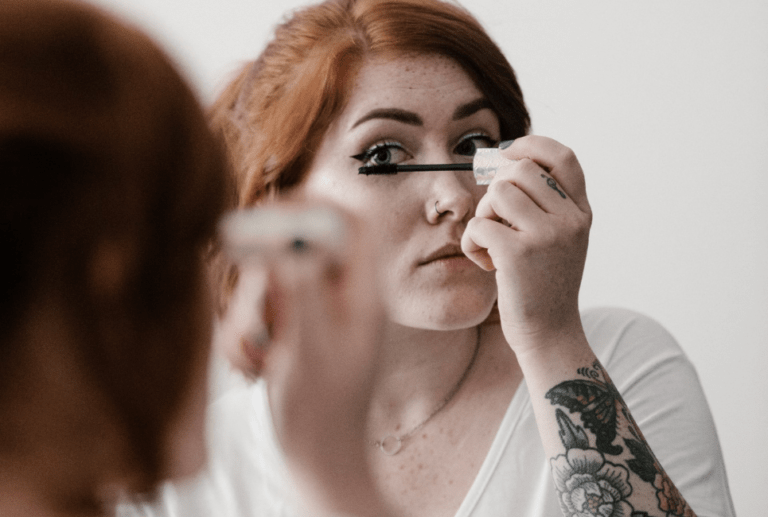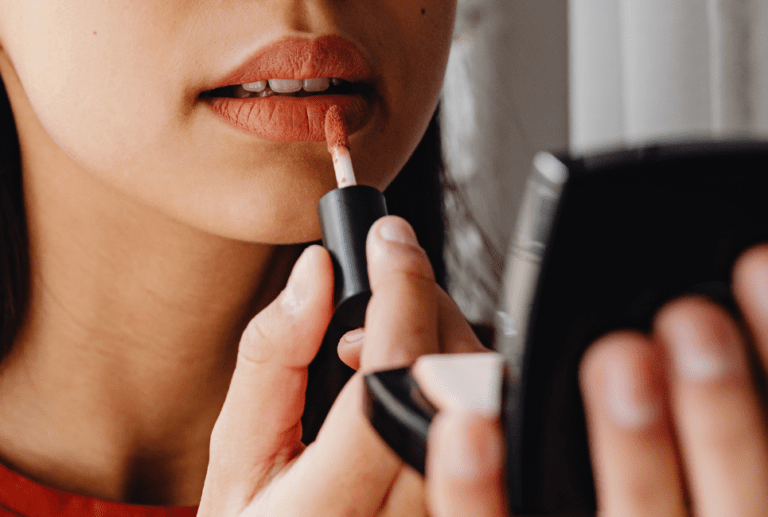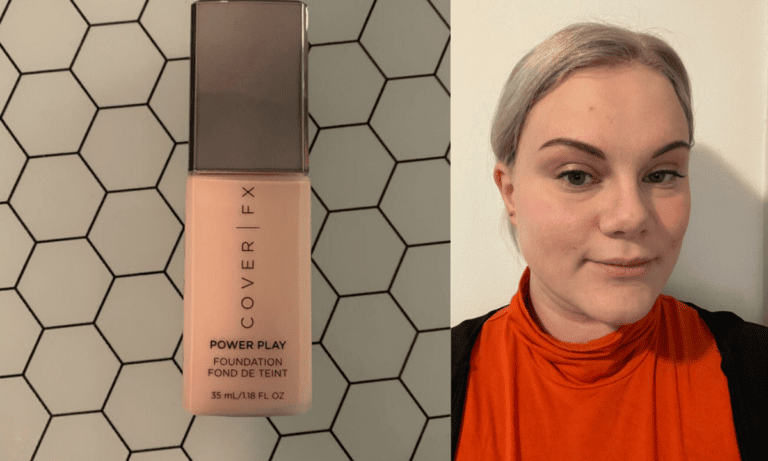What Is Microneedling – A Complete Guide With Everything You Need To Know
- Tarte Amazonian Clay Foundation Review: Why I’ll Never Trust Beauty Influencers Again - September 16, 2023
- Tarte Knockout Tingling Treatment Review & Guide - July 11, 2023
- Best IT Cosmetics Setting Cream Dupes - March 21, 2023
- What Is Micro-Needling?
- DIY vs Professional Micro-Needling
- Does Micro-Needling Hurt?
- Is Micro-Needling Bad For Your Skin?
- How Long Does Micro-Needling Last?
- Is Micro-Needling Good For Aging Skin?
- How Often Should I Do Micro-Needling?
- How Many Treatments of Micro-Needling Do You Need?
- How Should You Avoid Before And After Micro-Needling?
- Before your treatment
- After your treatment
- FAQs
- Get a micro-needling treatment today
Have you recently taken a trip to your local spa or salon and seen an advertisement for micro-needling up on the wall?
If so, you’re not alone. Recently, micro-needling services have taken the beauty industry by storm and it doesn’t seem to be slowing down any time soon. But, if you’ve never heard of micro-needling before, it’s important for you to do plenty of research on this beauty treatment.
And if you’re someone with acne scars or you’ve got a lot of hyperpigmentation like me, I’m here to change your life. You have to check out micro-needling.
Don’t worry, I’m here to make your life a lot easier. I’ve created this complete guide to answer all of your micro-needling questions. That way, you won’t have to spend hours online trying to answer all of the micro-needling questions you have. In this guide, I’m going to go over exactly what micro-needling is and what you can expect during this beauty treatment. In addition, I’ll help you to prepare for your first micro-needling session.
Without any further wait, let’s get into it!

What Is Micro-Needling?
So, the first question you probably have is, “what is micro-needling?” Micro-needling is a type of cosmetic procedure that is minimally invasive. You won’t be going under the knife for this procedure. Rather, you’ll be going under the needle(s).
Basically, micro-needling is a procedure that creates itty-bitty punctures in your skin. By inserting a bunch of short and super fine needles into your skin, it causes injury to the top layers. But, don’t worry – this injury is a good thing.
The small injuries made force your body to heal your skin. And without the long, boring, scientific explanation of how your body reacts to micro-needling, these small wounds heal up over time, resulting in clearer, firmer, more toned skin.

DIY vs Professional Micro-Needling
If you’ve ever spent a second on the beauty part of YouTube or Instagram, you may have seen a person take a spiky roller to their face. They’ll roll the roller around on their face for a few seconds. Typically afterward, they’ll apply face oil or moisturizer to their face.
The spiky roller you see these beauty social media influencers use is called a dermaroller. The dermaroller uses small and sharp needles and allows you to DIY a micro-needling session at home.
A lot of people have DIY-ed micro-needling sessions at home and have given up when they don’t see results. But, I’m here to explain to you that DIY micro-needling sessions and professional micro-needling sessions are two completely different things. So, if you’ve “given up” on micro-needling because you didn’t like your DIY results, hear me out.
The needles on micro-needling equipment that you can DIY at home are typically only around 1mm in length. So, you’re not getting deep punctures into your skin. However, professionals tend to use needles that range from 1mm to 3mm, meaning you’ll get a variety of needles in the different places around your face.
By using different needle lengths, the micro-needling professional can customize the wound sizes on your facial skin. They can do this by changing up what thickness of needle they’re placing around your face, depending on where they’re placing what needles.
And by doing this, they actually have more control over the wounds they’re creating on your face. So, what does that mean for you? You’ll see different, more drastic results.
It’s very important that you only ever get micro-needling done by a professional. Even DIY micro-needling sessions are dangerous because they greatly increase the risk of you developing an infection if you don’t take care of your equipment properly.
In addition, using professional quality tools at home can cause you to damage your skin. That’s why it’s so important to only go to a trusted micro-needling professional that has training and experience. But, the size of the needle isn’t all that makes a huge difference when you’re comparing DIY sessions to micro-needling professionals. How the needles are applied to your face also makes a world of difference.
No matter how many IGTV or YouTube videos you watch, you won’t ever get the same masterful skill that micro-needling techs or dermatologists have developed to be able to perform this on you. Professionals have the training and knowledge to properly perform a micro-needling session on your skin, depending on your skin type.

Does Micro-Needling Hurt?
Micro-needling doesn’t hurt in the way you may think it does. If you’re someone who shudders at the thought of getting a needle at the doctor’s office, you may not have to shy away from this treatment. Even though there are small needles used to create small holes in the skin, it doesn’t sting or burn in the same way a normal needle (from an injection) hurts.
Also, a lot of micro-needling professionals and dermatologists tend to also use a numbing cream when performing a micro-needling treatment. A micro-needling session can be uncomfortable. However, when combined with the numbing cream, you certainly won’t feel a thing!
Is Micro-Needling Bad For Your Skin?
If you’ve never heard of micro-needling before, you may be wondering if this treatment is safe to do on your skin. With a lot of beauty trends that quickly hit the market, there tend to be a lot of unexpected side effects people experience.
Micro-needling is considered to be an effective and safe treatment for your skin. However, there may be some side effects that you may experience after getting a micro-needling treatment. Here are some of the most common side effects you can expect to experience:
- Pain or discomfort where you got the micro-needling treatments
- Mild bruising
- Dryness and flaky skin
- Redness

It isn’t common for people to experience bleeding after a micro-needling treatment. However, if you had a treatment that went deep into your skin, you may experience a mild amount of bleeding.
Some of the more serious side effects that are rare include:
- Allergic reactions to medications used during the treatment
- Changes in your skin pigments
- Infections (if you go to a micro-needling service provided by an inexperienced and unprofessional tech)
Also, be prepared to experience a mild amount of pain after receiving treatment.
How Long Does Micro-Needling Last?
How long your micro-needling treatments last will depend on how many sessions you receive. If you’ve never had the treatment before, you can expect your results to last from anywhere between fours weeks, all the way up to six weeks.
If you want, you can also elect to get a follow-up treatment after your first treatment has completely healed. Most beauty technicians may recommend you wait 12 weeks after getting your first treatment to ensure that you’ve completely healed.
Is Micro-Needling Good For Aging Skin?
Yes, micro-needling is great for aging skin. It’s a wonderful treatment to invest in if you’re looking to make your skin look younger and smoother. This is because the treatment helps to tighten up your skin, making the appearance of your wrinkles less.
Micro-needling is beneficial for aging skin because of the tiny injuries that micro-needling causes. The small injuries created on the skin in your face cause collagen to come to the surface of your skin. As a result, there’s also an increase in elastin, both of which help to reduce the appearance of wrinkles and fine lines on your skin.
The combination of elastin and collagen in your skin helps to encourage strength in your skin. As a result, your skin will look more youthful.
How Often Should I Do Micro-Needling?
How often you get micro-needling treatments depends on the sensitivity of your skin and how much you want to keep up with treatments. On average, you can get a micro-needling treatment done at least once a month. However, you can push your treatments out to as long as 12 weeks apart. Really, how long apart your keep your appointments will depend on what your current skin goals are and what your aesthetician.
How Many Treatments of Micro-Needling Do You Need?
For you to see the full results of micro-needling, you should get at least four sessions of treatments. If you don’t have super sensitive skin, you can get micro-needling treatments done once a month (around every four weeks).
Getting treatments done this frequently, you can expect to see major results in the appearance of your skin. However, this doesn’t necessarily mean that this will be the case for you. You may find that you see results in your skin by getting treatments done less frequently.
On the other end of the spectrum, you may find that you need more treatments to see a major improvement in your skin, depending on what types of skin conditions you’re looking to treat.

How Should You Avoid Before And After Micro-Needling?
Micro-needling is a common treatment, but there are some things you should avoid before and after getting a treatment done. Here’s a list of what you should avoid before and after getting micro-needling done.
Before your treatment
NSAIDs
Before you get micro-needling done, you should avoid taking NSAIDs for at least a week before you get your treatment done. This is because NSAIDs will thin your blood out, which can make it more likely that you bleed after getting your treatment done. However, that doesn’t mean that you can’t take any painkillers at all. If you need to take something because of swelling or pain, take Tylenol.
In addition, you should make sure that you’re avoiding taking any supplements or anything that will thin out your blood.
Acne Treatments
You should also avoid acne treatments that contain isotretinoin. This is a type of retinoid, so it’s in a lot of acne treatments. If you’re on a prescription that contains this medication, you may want to talk to your healthcare provider to see if you can find alternative medicine to use in replacement of this.
You’ll want to avoid taking medications with isotretinoin because it reduces the amount of collagen your body is able to produce. By reducing the amount of collagen your body is producing, your micro-needling treatments won’t be as effective as they could be.

Hair Removal Gels
You should also avoid using any hair removal creams or gels one week before your treatment. But, it’s still completely fine for you to shave with soap and water. You’ll want to avoid using hair removal creams and gels because they can make your skin more sensitive. As a result, it could make your micro-needling treatment more painful than it actually is.
Getting Sunburnt
Up to one week before your micro-needling treatment, you should also avoid getting sunburnt. Any type of UV damage to your skin, including from a tanning bed, should be minimized. Doing this will ensure you don’t have increased skin sensitivity before your micro-needling treatment.
Cold Sores
If you notice you have a cold sore, you should consider rescheduling your appointment. When the micro-needling treatment punctures your cold sore, it could cause the herpes virus to spread around your skin, causing more cold sores to form.
After your treatment
Picking at your skin
After you get your micro-needling treatment, you should do your best to avoid picking at your skin for up to a week after your treatment. Up to the five-day period after your treatment, you’ll notice your skin will start to look extremely dry and have a flaky appearance. Don’t be surprised if your skin starts to peel either.
However, you shouldn’t pick at your skin and try to “help” your skin peel the tops layers. Also, you shouldn’t exfoliate your skin at all. This will only slow down your healing process and could even impact the quality of your results.
Using too much moisturizer
Another thing you’ll want to avoid is using too much moisturizer after your appointment. By adding too much moisture to your skin, you’ll drastically slow down the peeling process your skin goes through. You should really only moisturize your face once in the morning with a lightweight and gentle moisturizer.
Sweating
Avoid sweating as much as you can for up to three days after your micro-needling treatment. This means you should avoid taking hot baths, hot showers, steam rooms, intense exercise, or anything that causes you to sweat. Sweating will also drastically impact the quality of your results, so you should do your best to avoid sweating at all costs.
Icing your face
And we don’t mean covering your face in cake icing. You should avoid applying ice on the treated areas or anywhere near the areas that you’ve had treated.
By icing the areas on and around your skin that you’ve had treated, you’ll reduce the inflammation in your skin. However, you want inflammation in your skin, as the inflammation process is what causes collagen to rush to the surface of your skin. So, if you want super noticeable results, don’t ice your skin.

Makeup
In addition, you should also avoid using makeup on your skin after a micro-needling treatment. You should avoid using any makeup for up to seven days after your treatment. After your skin has started to peel, you can begin to use powered makeup. You can go back to completely using your regular makeup routine after your skin has completely finished healing.
By avoiding wearing makeup during the healing process, you’ll ensure your skin is able to properly peel. This will ensure you’re getting the results you want to get from your micro-needling treatment.
Sleeping on your side and stomach
One great tip to keep in mind is avoiding sleeping on your stomach and on your side for up to one week after you’ve gotten a micro-needling treatment done. The best way for you to sleep is to sleep with your back, with your head on an elevated pillow. This is will ensure your pillows and any rough fabrics aren’t irritating the skin on your face.
Tobacco and alcohol
Tobacco products should be avoided for a week before and a week after your micro-needling treatment. This is because there’s a lot of chemicals inside tobacco products that can drastically slow down the natural healing process of your skin.
Also, make sure that you avoid drinking alcohol after your micro-needling treatment for up to seven days. This is because the alcohol will cause you to become dehydrated, which will also drastically slow down your skin’s healing process.
FAQs
Question: Can micro-needling ruin your skin?
Answer: There can be a little bit of trauma that happens to your skin after a micro-needling treatment. However, micro-needling won’t ruin your skin! There are many beneficial changes that will happen to your skin after you’ve completely healed up.
Question: Is micro-needling worth the money?
Answer: Absolutely! It’s a great treatment to invest in if you’re looking to have noticeable (positive) changes in your skin without expensive creams or medications.
Question: Can I use Vitamin C serums after micro-needling?
Answer: It’s not recommended that you use Vitamin C serums after a micro-needling treatment. This is because Vitamin C won’t help your skin to increase its collagen production, so it really won’t do much for your skin.
Get a micro-needling treatment today
There are many benefits to getting a micro-needling treatment. If you’re struggling with feeling confident in your skin because of wrinkles, hyperpigmentation, or aging, you should consider looking into getting professional micro-needling treatments done near you. You’ll see noticeable differences in your skin after you’ve healed up, all without having to wait for expensive medications or creams to get to work on your skin!






